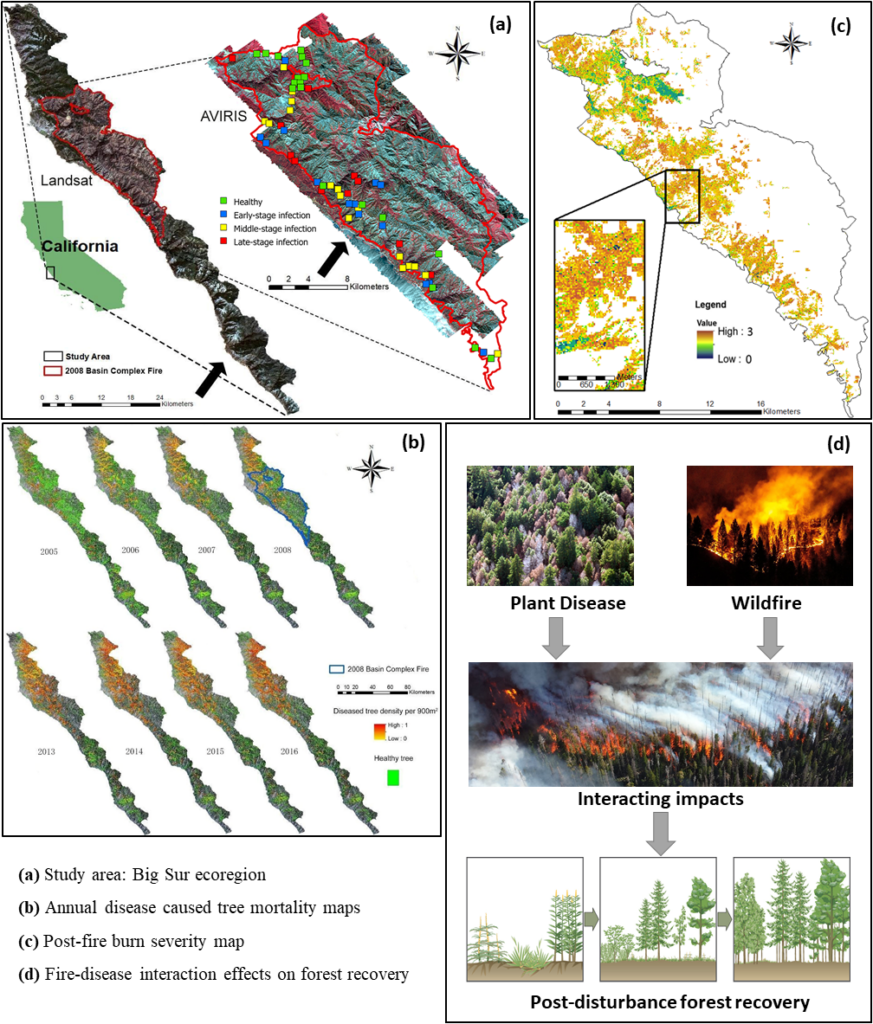Abstract:
Forest ecosystems are increasingly affected by a range of tree mortality events, which may permanently alter forest functional traits and disrupt their ecosystem services. While individual forest disturbances are well studied, interactions between multiple disturbances and changes of spatial patterns of forested landscapes are rarely quantified. In this study, we aim to analyze the role of wildfire in the Big Sur ecoregion of California on the spread of Phytophthora ramorum, an invasive pathogen which causes sudden oak death, the most important driver of mortality across 1000 km of coastal, fire-prone mixed conifer, evergreen hardwood, and woodlands. We investigated two questions specific to the impacts of these disturbances at the landscape scale: (i) did rates of P. ramorum caused tree mortality change after wildfire? (ii) Following the wildfire, to what degree did the continued disease-driven mortality alter forest distribution? To answer these questions, we analyzed remotesensing- derived products of post-fire burn severity and maps of disease-driven tree mortality. Quantification of burn severity and post fire disease mortality for the burned and unburned areas provided reference conditions for statistical hypothesis tests. The results from statistical and three landscape pattern analyses (area, shape, and isolation) suggest a significant role of wildfire in the reemergence of this invasive pathogen. First, rates of disease caused mortality after wildfire was negatively associated with burn severity suggesting some fire-driven containment of disease during post-fire forest recovery. Second, disease was positively correlated with the distance to fire boundary in unburned areas suggesting the effects of fire on disease extended into unburned areas while attenuating with distance from the burn. Lastly, wildfire reduced area, edge density and isolation of healthy tree patches and these effects did not recover to pre-fire levels for any of the three metrics after eight years of vegetation recovery. Given the widespread prevalence of disease-driven mortality, the importance and frequency of fire, as well as the naturalization of Phytophthora ramorum across a broad geographic area, these fire-disease interactions have potential to shape forest structure and disease dynamics across millions of acres of forested wildlands in California and Oregon.
